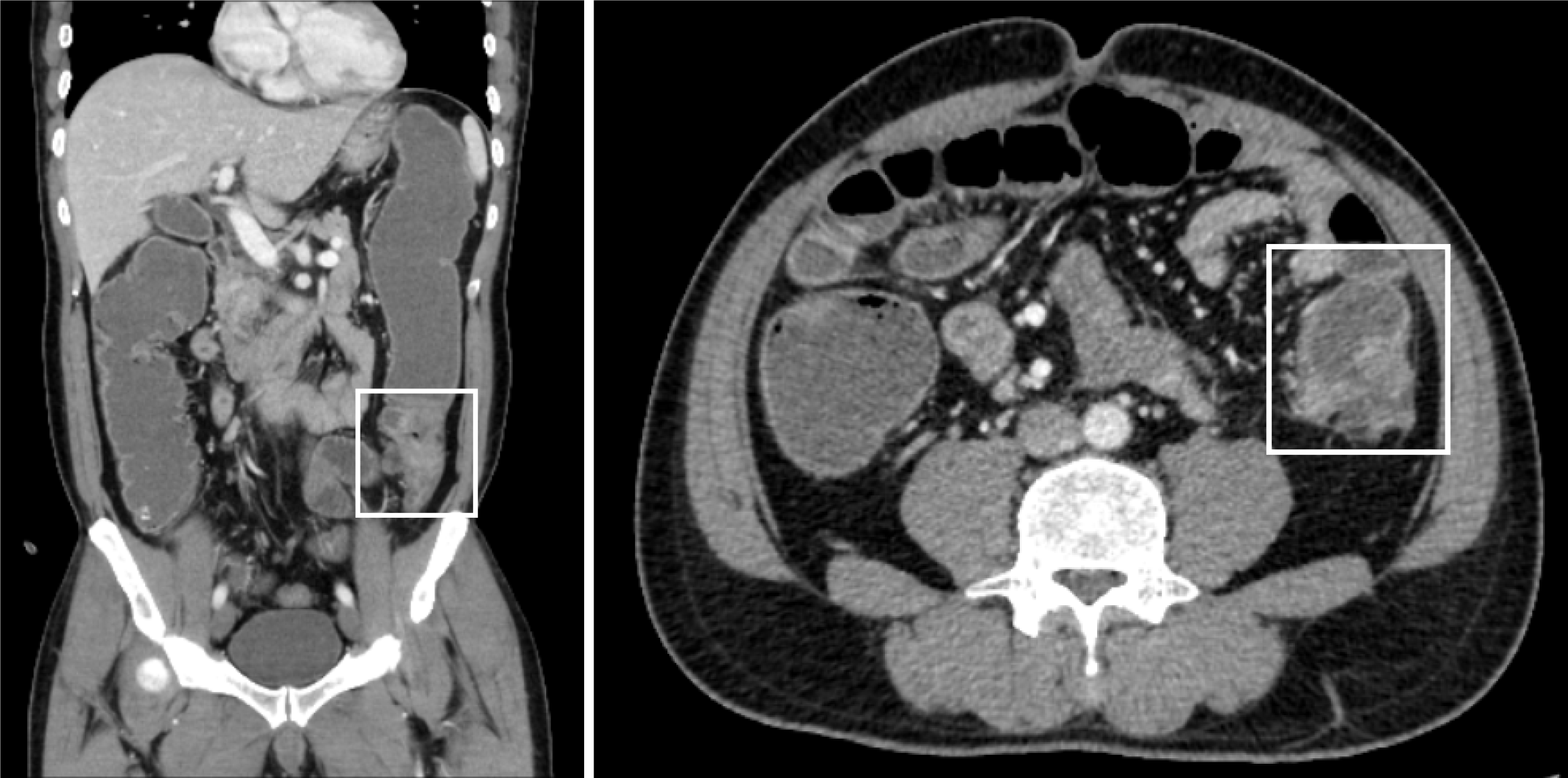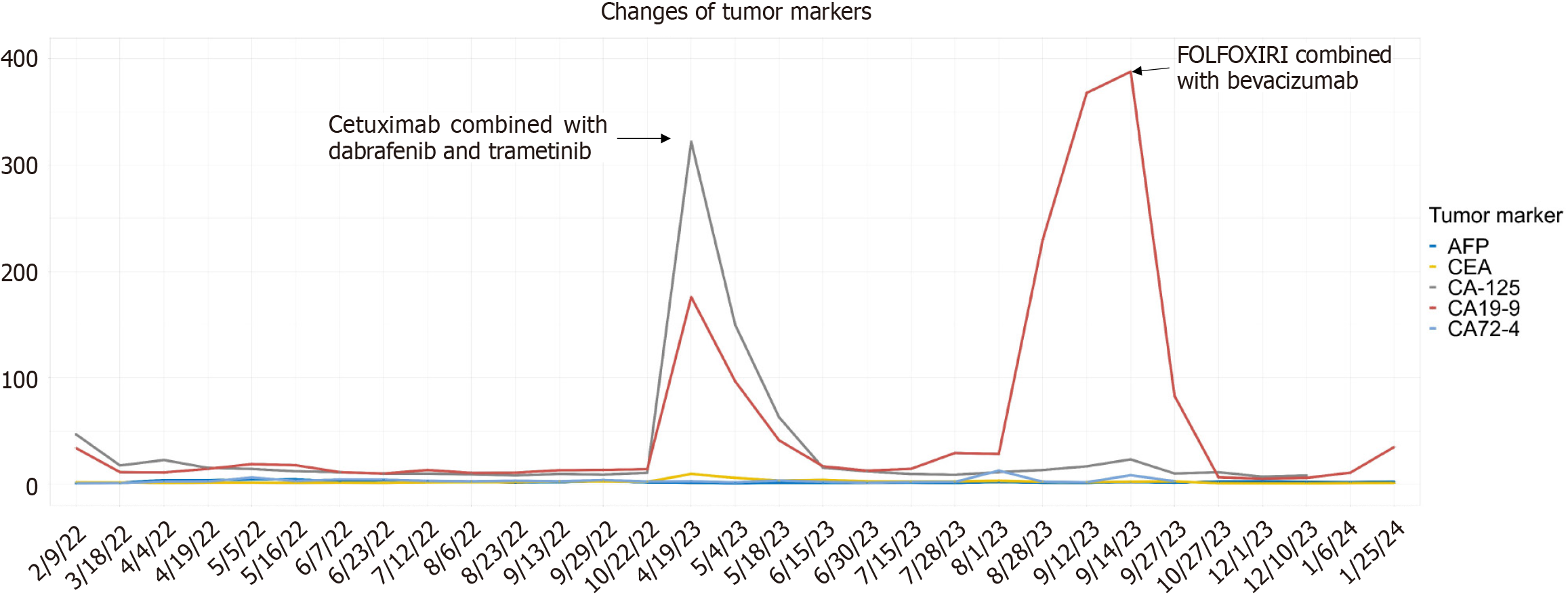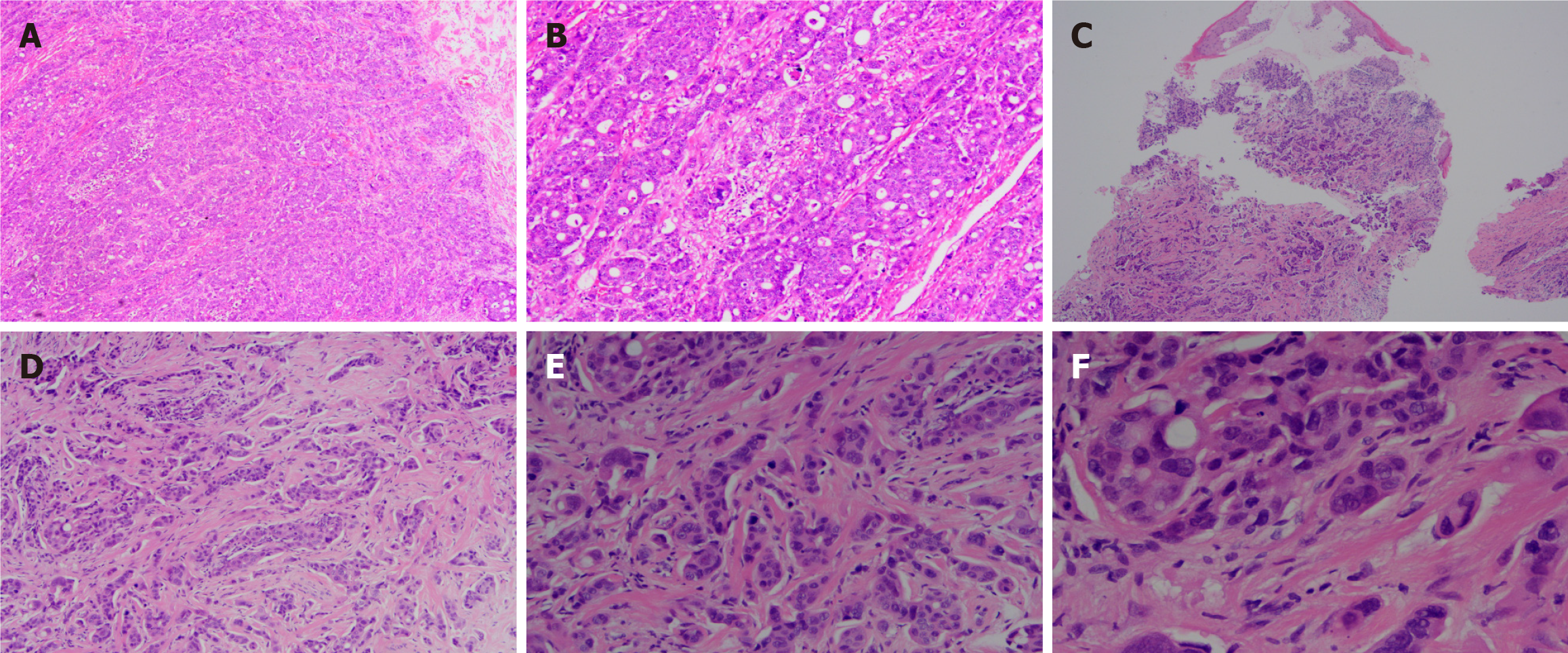Copyright
©The Author(s) 2025.
World J Gastrointest Oncol. Mar 15, 2025; 17(3): 100152
Published online Mar 15, 2025. doi: 10.4251/wjgo.v17.i3.100152
Published online Mar 15, 2025. doi: 10.4251/wjgo.v17.i3.100152
Figure 1 Computed tomography scans of the patient upon admission: The diseased segment exhibited thickening of the intestinal wall, rough surface texture, and significantly increased enhancement on the enhanced scan.
The proximal colon was obstructive dilatation.
Figure 2 Changes in tumor markers during treatment.
AFP: Alpha fetoprotein; CEA: Carcinoembryonic antigen; CA: Carbohydrate antigen.
Figure 3 Hematoxylin and eosin staining of colonic mass and penile mass.
The penis mass microscopic pathology performance similar to the colonic mass, considering penile metastasis from colon cancer. A: Colonic mass (original magnification × 100); B: Colonic mass (original magnification × 200); C: Penile mass (original magnification × 40); D: Penile mass (original magnification × 100); E: Penile mass (original magnification × 200); F: Penile mass (original magnification × 400).
Figure 4 The immunohistochemical staining results of the penile mass indicated a colonic origin.
A: CDX2 (original magnification × 100); B: CK20 (original magnification × 100); C: SATB2 (original magnification × 100).
Figure 5 Timeline of the patient's treatment course.
SD: Stable disease; FOLFOXIRI: 5-FU, 2800 mg/m2, 48-hour continuous intravenous (i.v.) infusion; leucovorin, 200 mg/m2i.v.; irinotecan, 165 mg/m2; oxaliplatin, 85 mg/m2i.v.
- Citation: Wu JC, Cheng HX, Lan QS, Xu HY, Zeng YJ, Lai W, Chu ZH. Penile metastasis from colon cancer with BRAFV600E mutation treated with BRAF/MEK-targeted therapy plus cetuximab: A case report. World J Gastrointest Oncol 2025; 17(3): 100152
- URL: https://www.wjgnet.com/1948-5204/full/v17/i3/100152.htm
- DOI: https://dx.doi.org/10.4251/wjgo.v17.i3.100152













